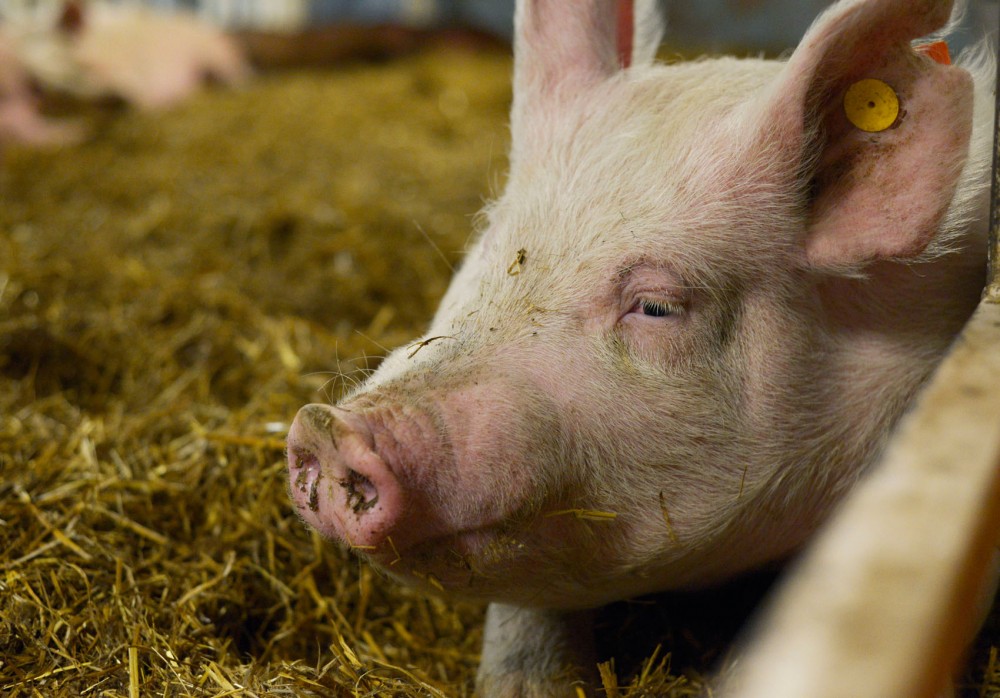University of Minnesota researchers are fighting a deadly hog virus, and extra funding is on the table to help speed up the process.
Researchers from the University’s College of Veterinary Medicine and the Veterinary Diagnostic Laboratory are working on plans to battle the infection and are hoping that state legislators join their cause and boost their labs’ funding.
Last summer, the veterinary experts developed a diagnostic test to help spot the virus, and now, with more research, they are hoping to slow its spread. Minnesota legislators are mulling a large funding proposal this legislative session in order to help their efforts.
Sen. Gary Dahms, R-Redwood Falls, who is leading legislation to give the research lab $100,000, said it is important to help researchers fighting the Porcine Epidemic Diarrhea Virus because its effects are far-reaching. Another proposal that would provide $1.2 million to help University researchers surfaced in the House.
Dr. Thomas Molitor, who chairs the University’s Department of Veterinary Population Medicine, said livestock owners are suffering, pork prices are increasing and millions of pigs are dying.
“In a year’s time, [the virus] has had devastating effects, not only in Minnesota, but all parts of the country,” he said.
The deadly disease has affected more than 200 Minnesota farms so far, Molitor said. The virus, which originated in China, mostly affects piglets and gives them severe diarrhea and vomiting. But unlike the swine flu, it can’t affect humans.
The University’s swine on the St. Paul campus haven’t contracted the disease, because the facility has strict security measures and researchers take extra
precautions. Those who enter the buildings must wear special gear to protect the pigs from contamination.
Dr. Montse Torremorell, an associate professor in the Department of Veterinary Population Medicine, said the virus usually spreads through swine feces and bile. She is currently studying how dust particles can also transmit the disease.
Veterinary Diagnostic Laboratory Director James Collins said that it’s unclear how the disease spread to the U.S. So far, at least 4 million pigs have died across the country.
Understanding transmission is crucial because then it’s easier to try and stop the spread, Torremorell said. If it can move through the air, she said, there is a need to heighten biosecurity.
Because piglets are usually held close together in small enclosures, the virus spreads swiftly. Its mortality rate ranges from 50 to 100 percent.
Consumers face high pork prices because of the epidemic, which Molitor said he doesn’t see decreasing anytime soon.
The epidemic is causing a “ripple effect” throughout the economy, Dahms said.
“This is about the consumers and the wage earners, too,” he said. “We need to try to get ahead of this as much as we can.”
The biggest issues livestock owners voice to researchers involve how they can keep non-infected swine protected and recover from a major loss of animals, Molitor said.
When the University developed a diagnostics test — seven weeks after the first national reports of the virus — researchers made them available for pig owners immediately. As of Feb. 27, more than 28,000 tests had been administered.
Other institutions, like Iowa State University, are working toward similar goals, and Molitor said researchers are talking with each other to ensure they aren’t duplicating efforts.
Collins said Sen. Amy Klobuchar, D-Minn.; Sen. Al Franken, D-Minn.; and other federal leaders alerted the U.S. Department of Agriculture about the situation. Also, Gov. Mark Dayton has been discussing the issue with the state’s Commissioner of Agriculture.
The state Legislature is set to approve a significant funding boost to help the University. State legislators will decide on a final amount in the coming weeks.
“This will be a burst of money that will be very helpful to leverage with other funding,” Collins said.
Even with the extra funds, Torremorell said researching a vaccine is difficult because the virus is hard to grow and requires special environments to maintain.
“The process is labor-intensive and costly, and we have to do it under isolated conditions,” she said.
By the end of the week, researchers will form a plan to outline how to use the extra funding most effectively. Once finalized, College of Veterinary Medicine Dean Trevor Ames will review the budget plan before it’s approved.
Extra state funding is just a small part of the pie for University researchers, who hope to receive more from federal government and pork industry leaders.
“Everybody is going to feel the brunt of this,” Dahms said.
















